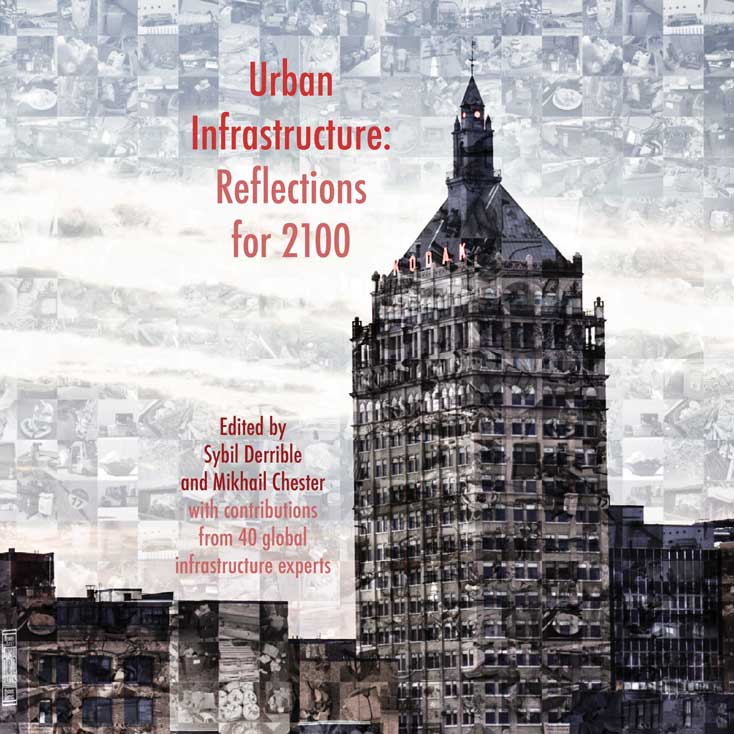New book takes a creative look at infrastructure in 2100

What will the world’s infrastructure look like in 2100?
Sybil Derrible, associate professor of civil, materials, and environmental engineering, has an idea, and he’s sharing it in the new book Urban Infrastructure: Reflections for 2100.
Derrible collaborated with Associate Professor Mikhail Chester at Arizona State University to compile science-fiction short stories, essays, and poems from 40 infrastructure experts from around the world.
The preface includes a quote from theoretical physicist and mathematician Freeman Dyson’s 1988 book Infinite in All Directions: “There are two ways to predict the progress of technology. One way is economic forecasting, the other way is science fiction. Economic forecasting makes predictions by extrapolating curves of growth from the past into the future. Science fiction makes a wild guess and leaves the judgment of its plausibility to the reader … For the future beyond ten years ahead, science fiction is a more useful guide than forecasting.”
Derrible noted that science fiction has been used in this way before, but rarely by people in his field. “I don’t know any other books that give an outlet to infrastructure experts—not writers—to imagine the future,” he said. “However, I know there are some books of the early 1900s that try to predict the year 2000. They are all comically wrong, and I thought people in 2100 might get a kick out of it when they see our book.”
The book allowed the contributors to break away from the traditional work of academics and let their imaginations, rather than numbers and models, drive the thought process.
“For me, the book provided a new and liberating experience,” Derrible said. “I really wanted to have fun, and I know the contributors enjoyed the process. It was different and, again, I think the right term is ‘liberating’ without the constraints to remain realistic.”
While it is impossible to predict what infrastructure will be like in 2100, the book does address serious issues such as climate change, sustainability, resilience, and technology.
“Many challenges are directly linked to our current lifestyles that are unsustainable, and we know that urban infrastructure will need to change in this century to adapt to these challenges,” Derrible said.
“The goal of this book is not to make accurate descriptions of the future,” he added. “Instead, it is to provide a dialogue and visions of what we could hope for or fear. Only time will tell on which side of the balance we end up leaning.”
Derrible and Chester also got creative with the book pricing. They intentionally priced the print version at $21 for 2100, and the ebook costs $14.52, reflecting Leonardo Da Vinci’s birth year. “We wanted the book to be inexpensive so it is accessible to a large audience, especially students,” Derrible said.
Learn more about Derrible’s present-day research at https://csun.uic.edu.